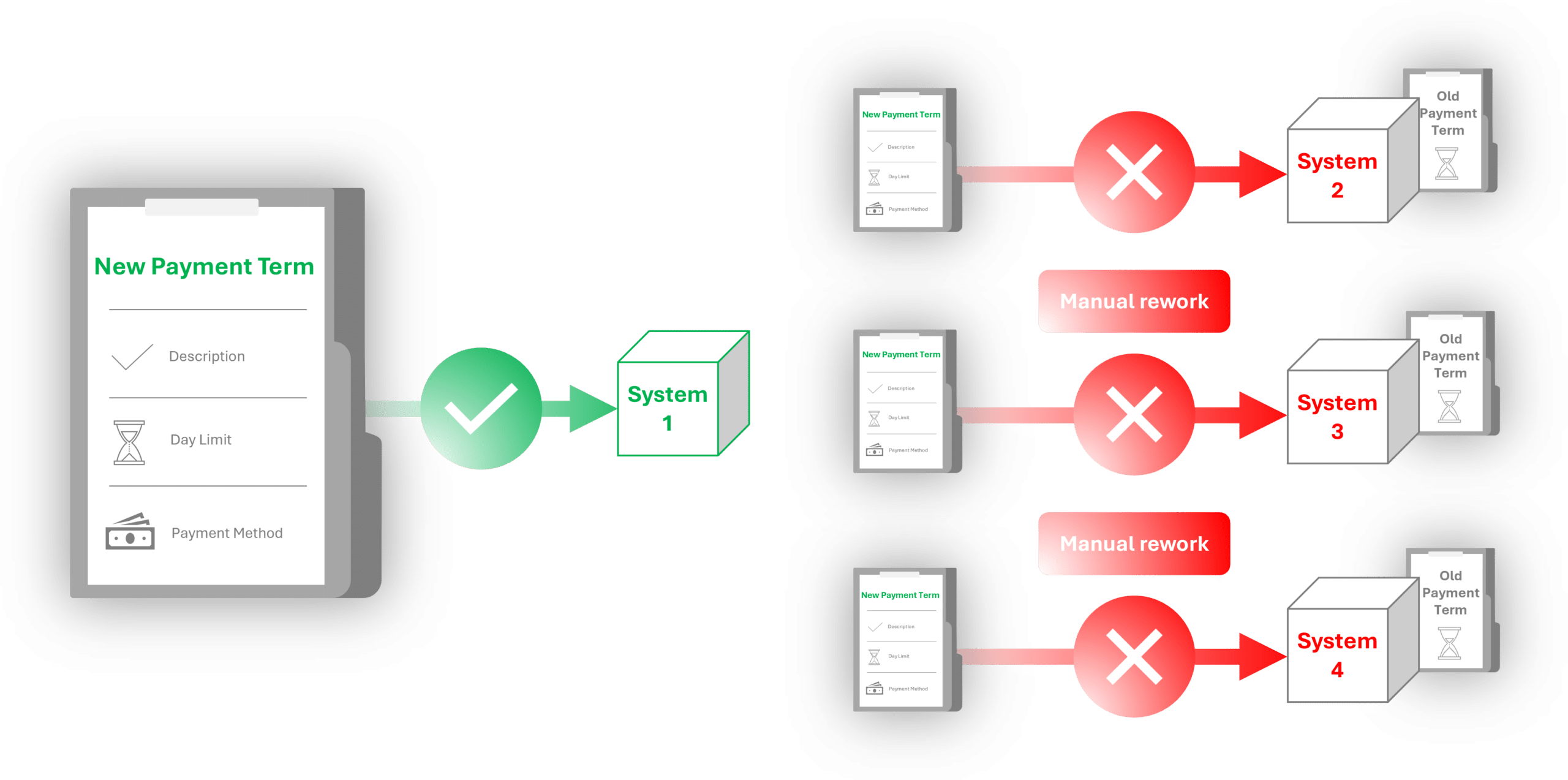
Product Excellence Through Modern PLM in Fast-Paced Markets
Modern PLM systems empower businesses to achieve product excellence in fast-paced markets by enhancing collaboration, agility and innovation.

In this blog post series we will have a look into the challenges of various roles within a company and their respective challenges when it comes to (reference) data handling and the negative impacts insufficient measures have on their daily work.
In today’s complex business landscape, effective procurement is a cornerstone of success. For purchasers, the task involves not just negotiating prices and securing supplies but also managing a wealth of data to ensure smooth transactions. One of the most critical and often challenging aspects of this role is handling supplier master data, especially when this data needs to be synchronized across multiple systems.
In many organizations, supplier master data is maintained in a central system to ensure consistency and accuracy. This central system acts as the single source of truth for all supplier-related information. However, the actual purchasing transactions often occur in a separate system tailored for operational efficiency. For instance, while the supplier data might be managed in SAP MDG, the procurement activities might take place in a specialized S/4HANA procurement system.
A significant challenge arises when attempting to synchronize supplier master data between the central system and the transactional system. Any discrepancies or unsynchronized customizing can lead to replication failures. One particularly problematic issue is the introduction of new payment terms in the central system that are not recognized in the purchasing system.
Consider a scenario where the procurement department negotiates a new payment term with several key suppliers. This new payment term, designed to improve cash flow and offer more flexibility, is meticulously recorded in the central master data system. However, due to various reasons this new payment term does not exist in the purchasing system yet.
When the updated supplier master data, including the new payment term, is replicated from the central system to the purchasing system, the replication process encounters an error. The purchasing system cannot recognize the new payment term, leading to a failure in the data replication process. As a result, the purchasing system cannot access the updated supplier information, causing several downstream issues:
To overcome these challenges, purchasers and their organizations can adopt several strategies. They range from organization and procedural adjustments to the maintenance and governance process of customizing to continuous monitoring of data availability throughout the whole landscape.
All these adjustments can be supported with solutions like Camelot Reference Data Management, which ensures end-to-end data governance, supports hybrid system landscape, synchronizes customizing on the spot and improves overall data quality as well as the integrity of downstream business processes. Watch the short demo.
For purchasers, the challenges of managing supplier master data in a multi-system environment are significant but not insurmountable. The introduction of new payment terms and the subsequent failure in data replication highlight the critical need for synchronized and accurate data. By understanding these complexities and implementing effective reference data management strategies, organizations can ensure that their procurement processes run smoothly, even in the face of reference data synchronization challenges. The key lies in recognizing the importance of accurate and synchronized data, fostering collaboration across teams, and investing in robust data governance solutions.
Discover our solution.

Modern PLM systems empower businesses to achieve product excellence in fast-paced markets by enhancing collaboration, agility and innovation.

Read how the Campaign Planner & Designer (CPD) helps you to manage supply chain variability.

Explore automated production planning with our Campaign Planner & Designer.

The pharma market trends impact logistics with a shift to smaller, higher-value shipments and new temperature requirements.
© Camelot Management Consultants, Part of Accenture